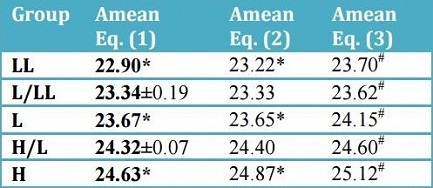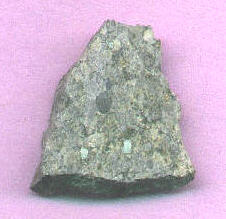Qidong
L/LL5
Fell July 2, 1982
32° 05′ N., 121° 30′ E. A single stone of 1,275 g fell at 5:45 P.M. in Qidong County, Jiangsu province, China. After detonations were heard, the meteoriteWork in progress. A solid natural object reaching a planet’s surface from interplanetary space. Solid portion of a meteoroid that survives its fall to Earth, or some other body. Meteorites are classified as stony meteorites, iron meteorites, and stony-iron meteorites. These groups are further divided according to their mineralogy and Click on Term to Read More was found lying in a field. Qidong has a recrystallized texture but chondrulesRoughly spherical aggregate of coarse crystals formed from the rapid cooling and solidification of a melt at ~1400 ° C. Large numbers of chondrules are found in all chondrites except for the CI group of carbonaceous chondrites. Chondrules are typically 0.5-2 mm in diameter and are usually composed of olivine Click on Term to Read More are still obvious, consistent with a petrologic grade of 5. Shock features include extensive fracturing and undulose extinctionIn astronomy, the dimming of starlight as it passes through the interstellar medium. Dust scatters some of the light, causing the total intensity of the light to diminish. It is important to take this effect into account when measuring the apparent brightness of stars. The dark bands running across portions Click on Term to Read More in silicates, with mosaisicm recognized in some olivines. Fine-grained troiliteBrass colored non-magnetic mineral of iron sulfide, FeS, found in a variety of meteorites. Click on Term to Read More/metal assemblages are abundant throughout. The vast majority of metalElement that readily forms cations and has metallic bonds; sometimes said to be similar to a cation in a cloud of electrons. The metals are one of the three groups of elements as distinguished by their ionization and bonding properties, along with the metalloids and nonmetals. A diagonal line drawn Click on Term to Read More grains are taeniteLess common than kamacite, both taenite and kamacite are Ni-Fe alloys found in iron meteorites. Taenite, γ-(Fe,Ni), has 27-65 wt% Ni, and forms small crystals that appear as highly reflecting thin ribbons on the etched surface of a meteorite; the name derives from the Greek word for "ribbon." Click on Term to Read More.

Diagram credit: M. Szurgot, 47th LPSC, #2180 (2016)
Amean based on chemical composition (Eq. 1), Fe/Si atomic ratio (Eq. 2), and grain density (Eq. 3) The discovery of several anomalous olivine and pyroxeneA class of silicate (SiO3) minerals that form a solid solution between iron and magnesium and can contain up to 50% calcium. Pyroxenes are important rock forming minerals and critical to understanding igneous processes. For more detailed information, please read the Pyroxene Group article found in the Meteoritics & Classification category. Click on Term to Read More grains having abnormal Mg# suggests that Qidong is a fragmental brecciaWork in Progress ... A rock that is a mechanical mixture of different minerals and/or rock fragments (clasts). A breccia may also be distinguished by the origin of its clasts: (monomict breccia: monogenetic or monolithologic, and polymict breccia: polygenetic or polylithologic). The proportions of these fragments within the unbrecciated material Click on Term to Read More. The various components of the breccia must have been mixed by a late impact event after the main period of metamorphism had ended. Final lithification was accomplished through subsequent smaller impact shock events. Although Qidong is published as a classification of L5, a growing body of evidence is leading to the conclusion that it is another member of an intermediate chondriteChondrites are the most common meteorites accounting for ~84% of falls. Chondrites are comprised mostly of Fe- and Mg-bearing silicate minerals (found in both chondrules and fine grained matrix), reduced Fe/Ni metal (found in various states like large blebs, small grains and/or even chondrule rims), and various refractory inclusions (such Click on Term to Read More group. This group includes L/LL3 Esperance, L/LL4 Seemore Downs, Bjurböle, and Cynthiana, L/LL5/6 Sahara 97021, L/LL6 Acfer 041, and several others. A few meteorites are only partially resolved into the L/LL group, including L/LL3 Inman, L/LL5 Knyahinya, and L/LL6 Holbrook and Sultanpur. The main massLargest fragment of a meteorite, typically at the time of recovery. Meteorites are commonly cut, sliced or sometimes broken thus reducing the size of the main mass and the resulting largest specimen is called the "largest known mass". Click on Term to Read More of Qidong is held at the Purple Mountain Observatory, Academia Sinica, in Nanjing, China. The Qidong specimen shown above weighs 2.16 g, and it was cut from a 35 g fragment purchased at the 2001 Macovich Meteorite Auction in Tucson.







